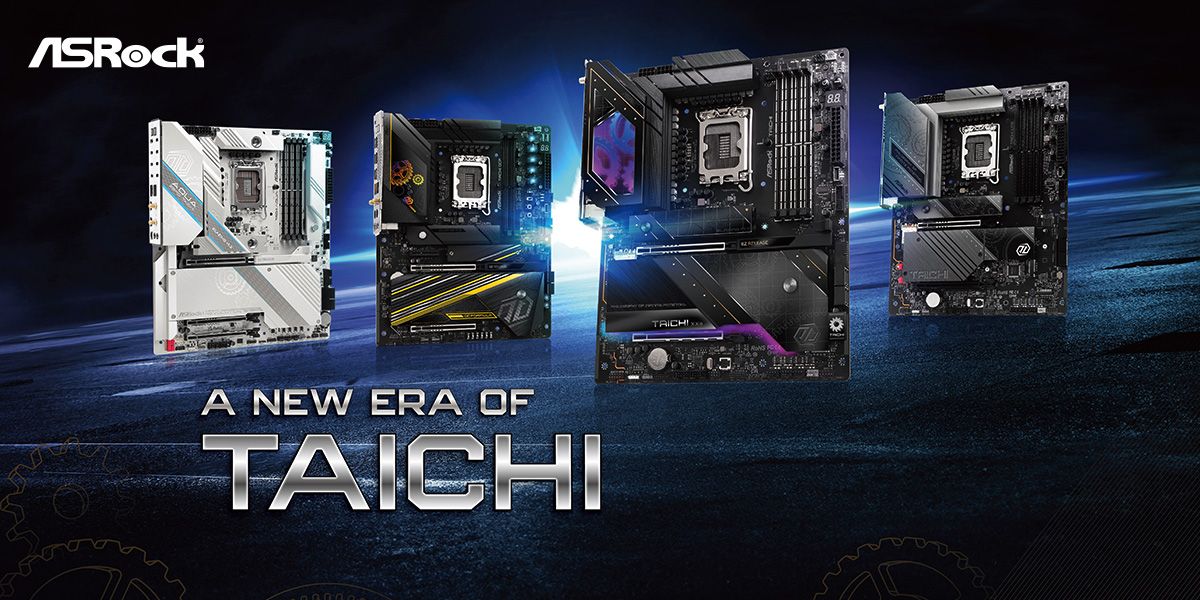
ASRock brought a plethora of new Arrow Lake-S compatible motherboards to Computex 2024 to show off before Intel's next-generation CPU lineup launches later this year. The motherboard manufacturer unveiled a couple of all-new SKUs, including a new Taichi variant sporting a CAMM2 module.
The Taichi series continues to be ASRock's flagship motherboard series with its Arrow Lake-S motherboard lineup. ASRock revealed four Taichi variants, including the cream of the crop — Taichi Aqua, a vanilla Taichi variant, Taichi Lite, Taichi OCF, which is new for this generation.
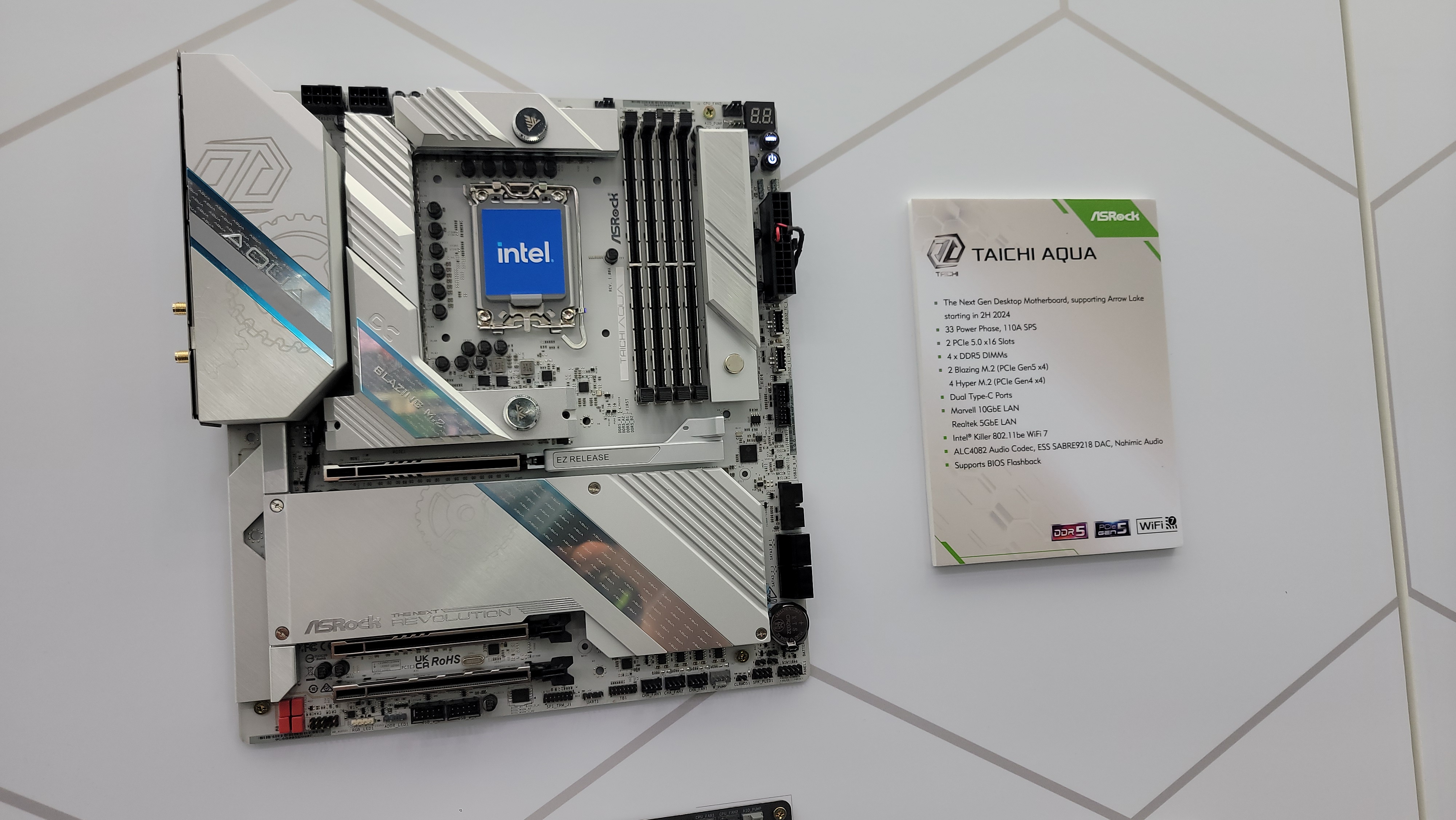
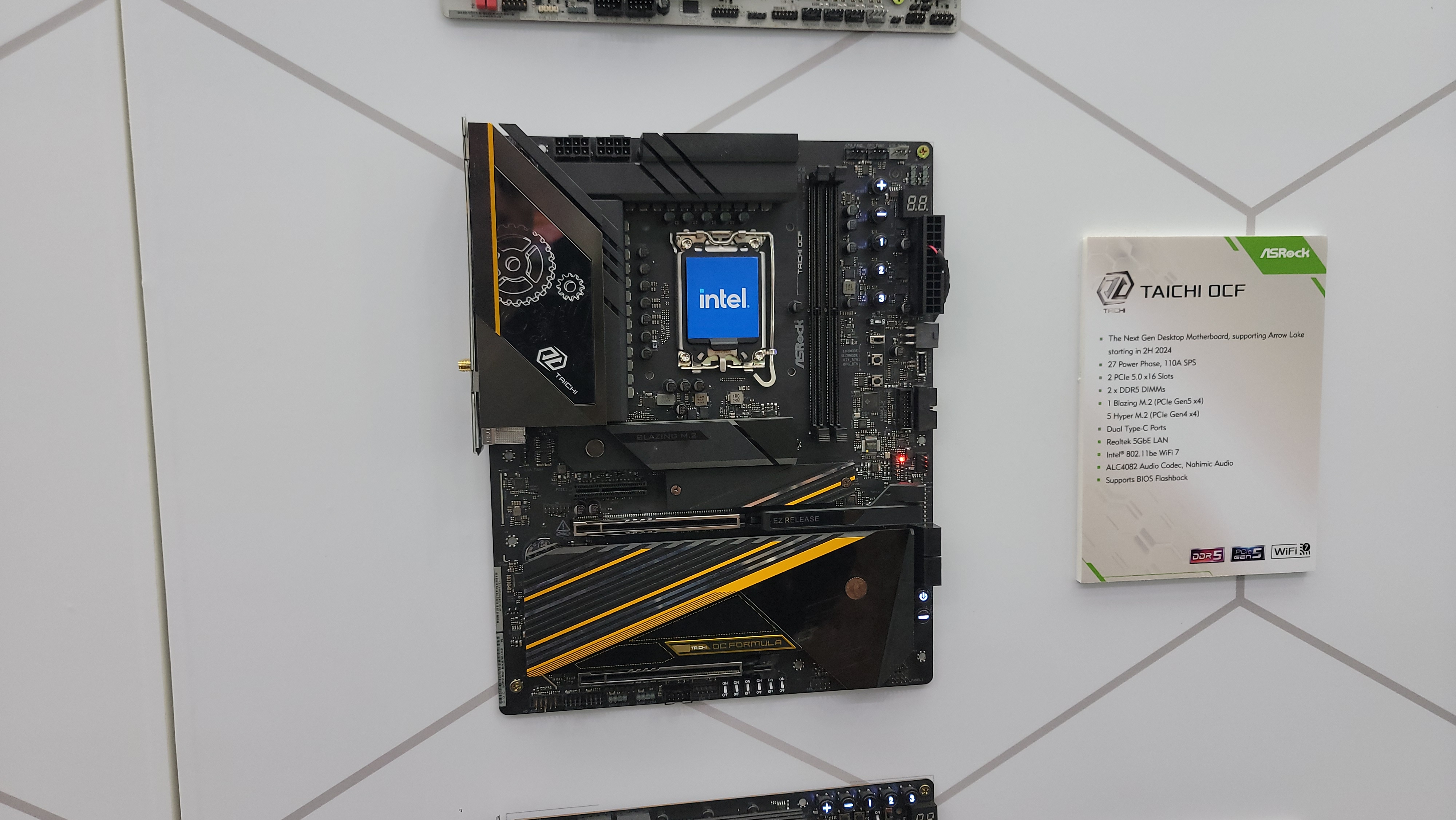
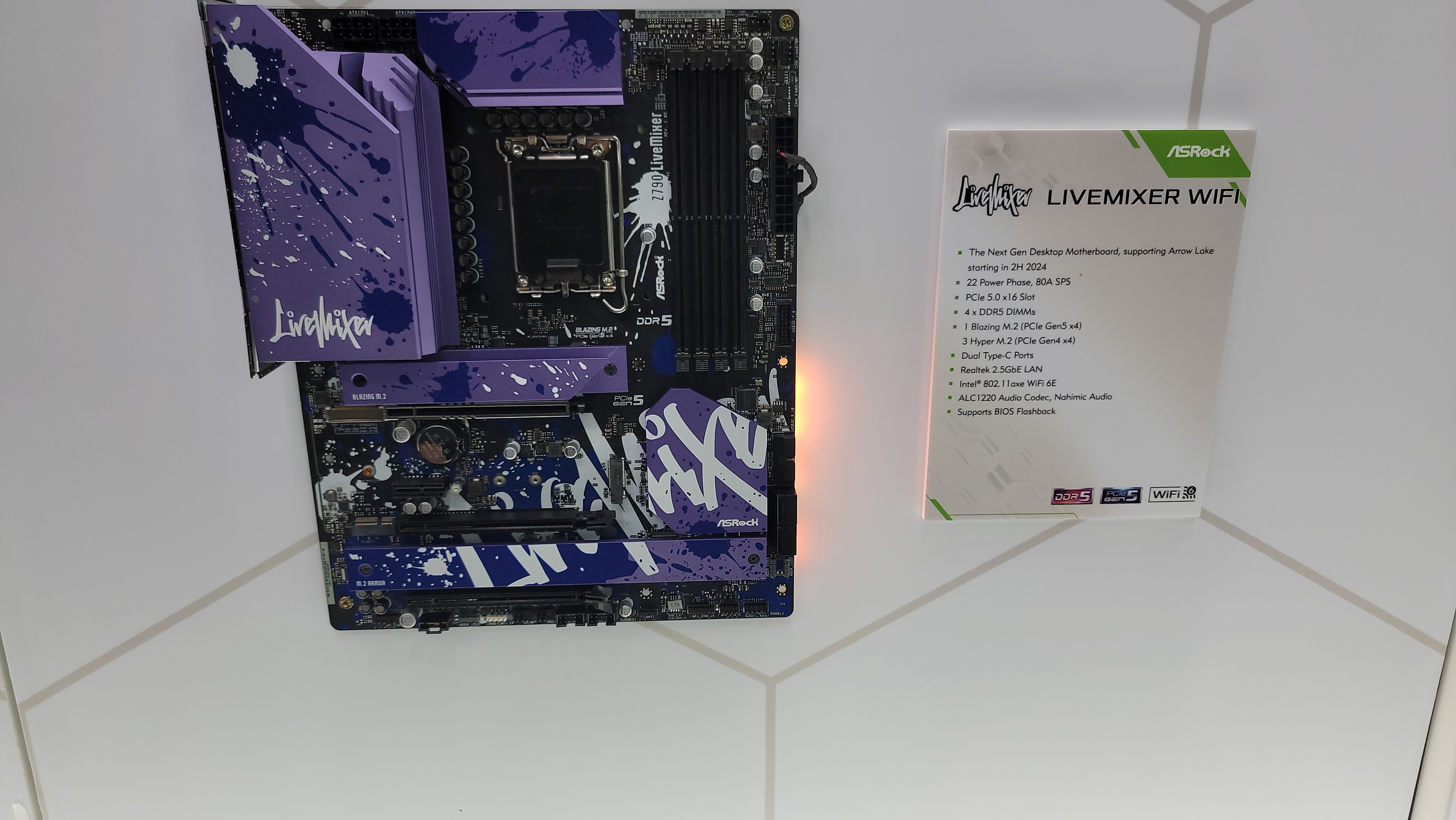
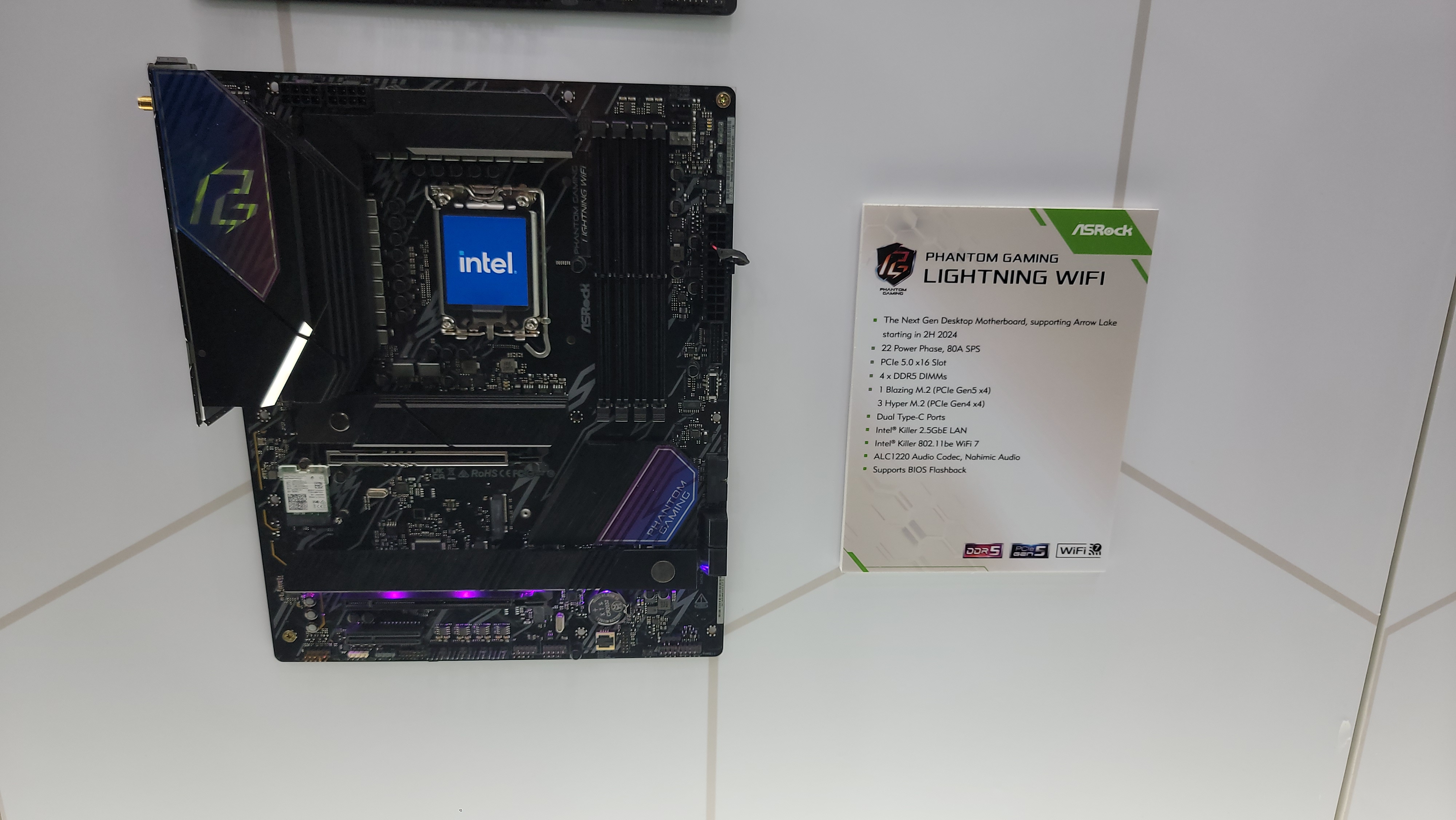
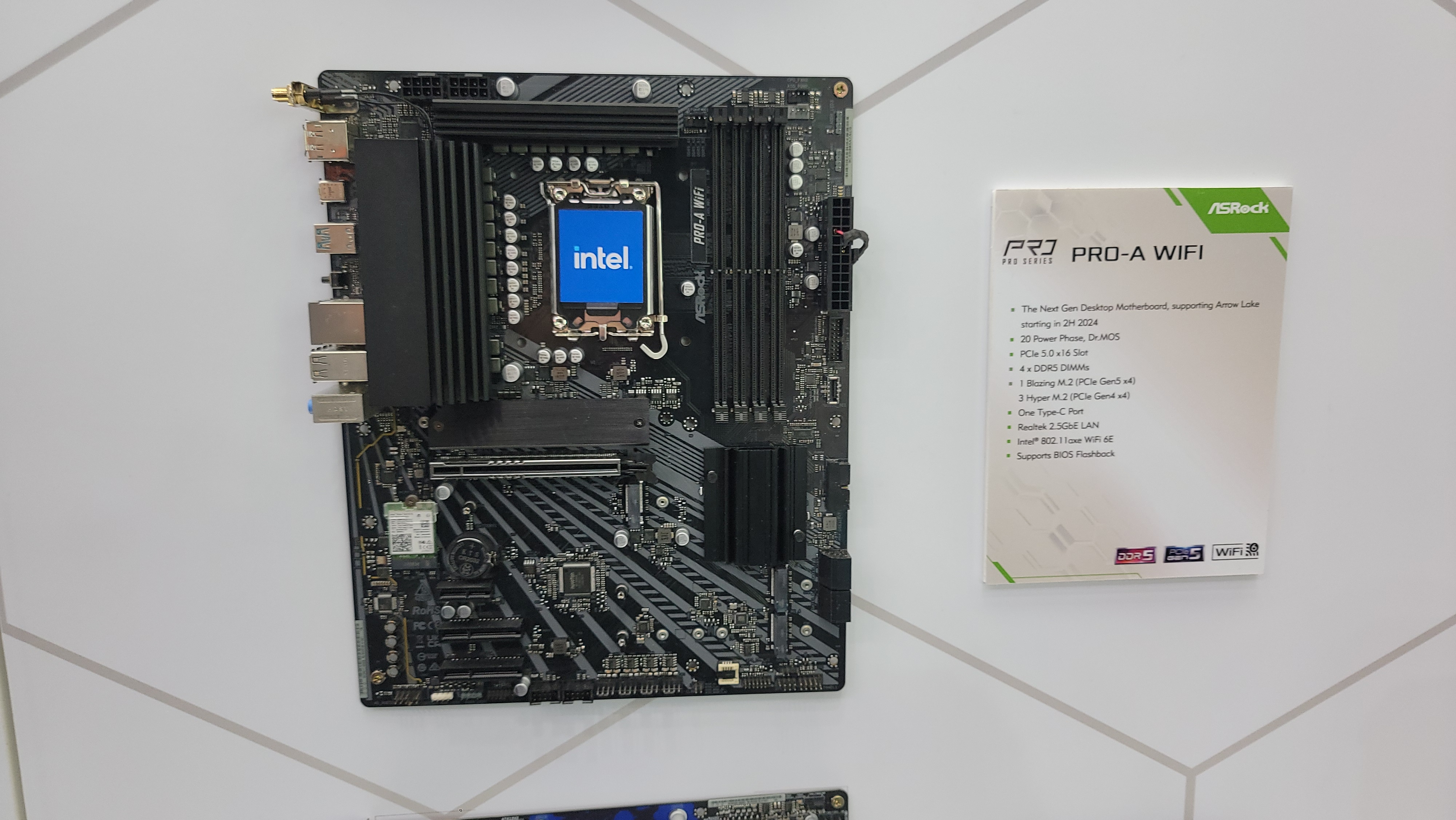
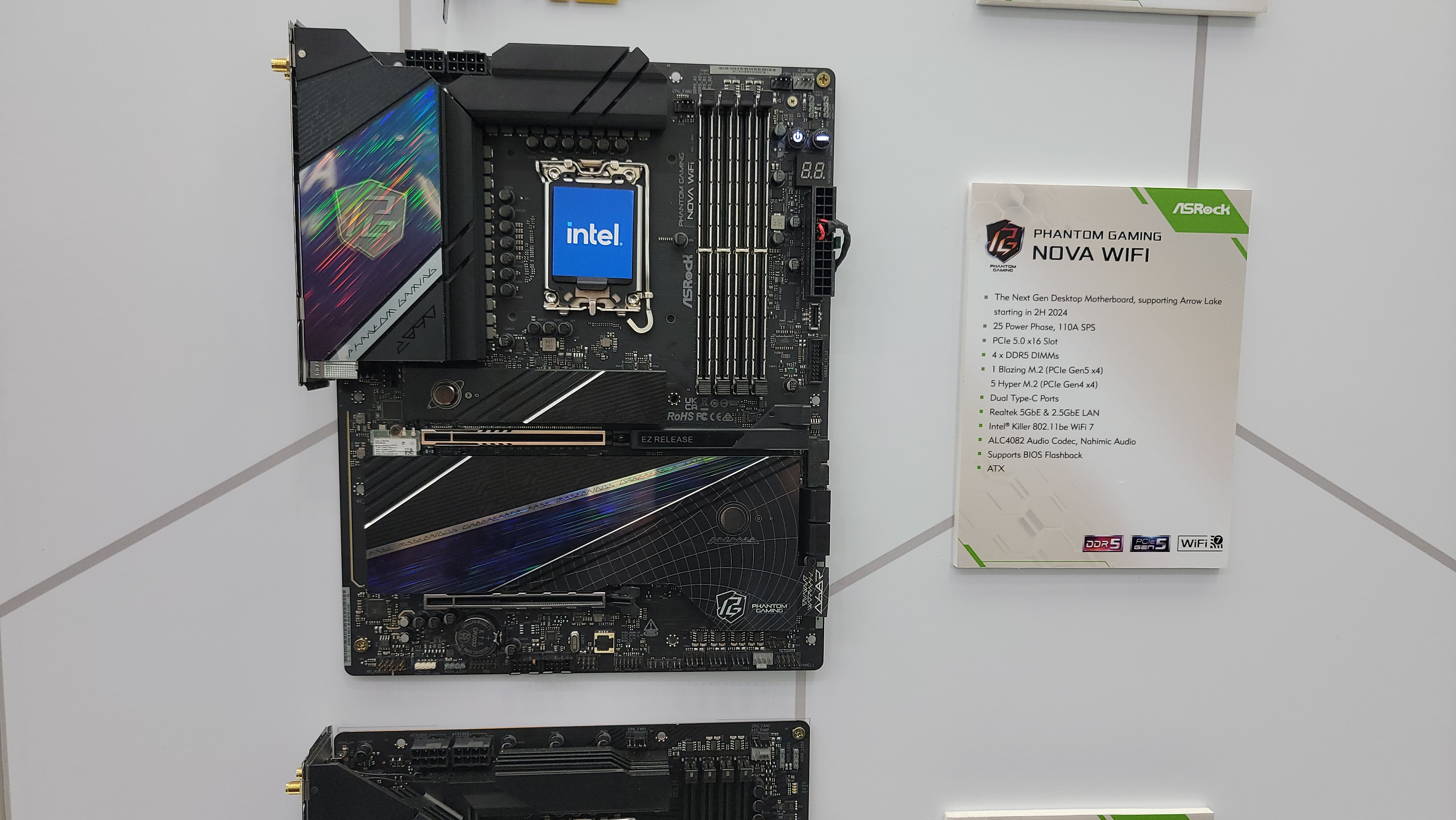
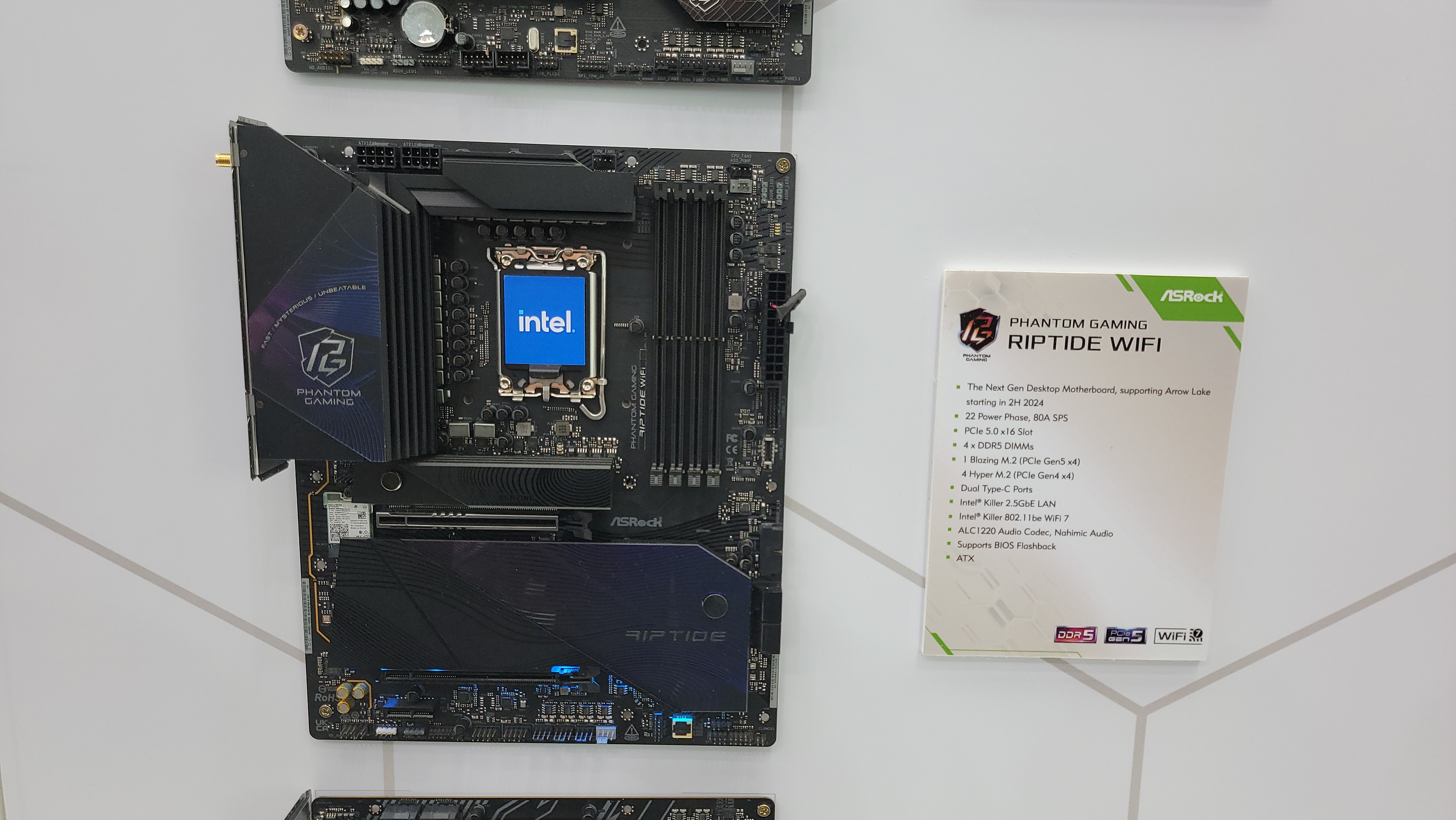
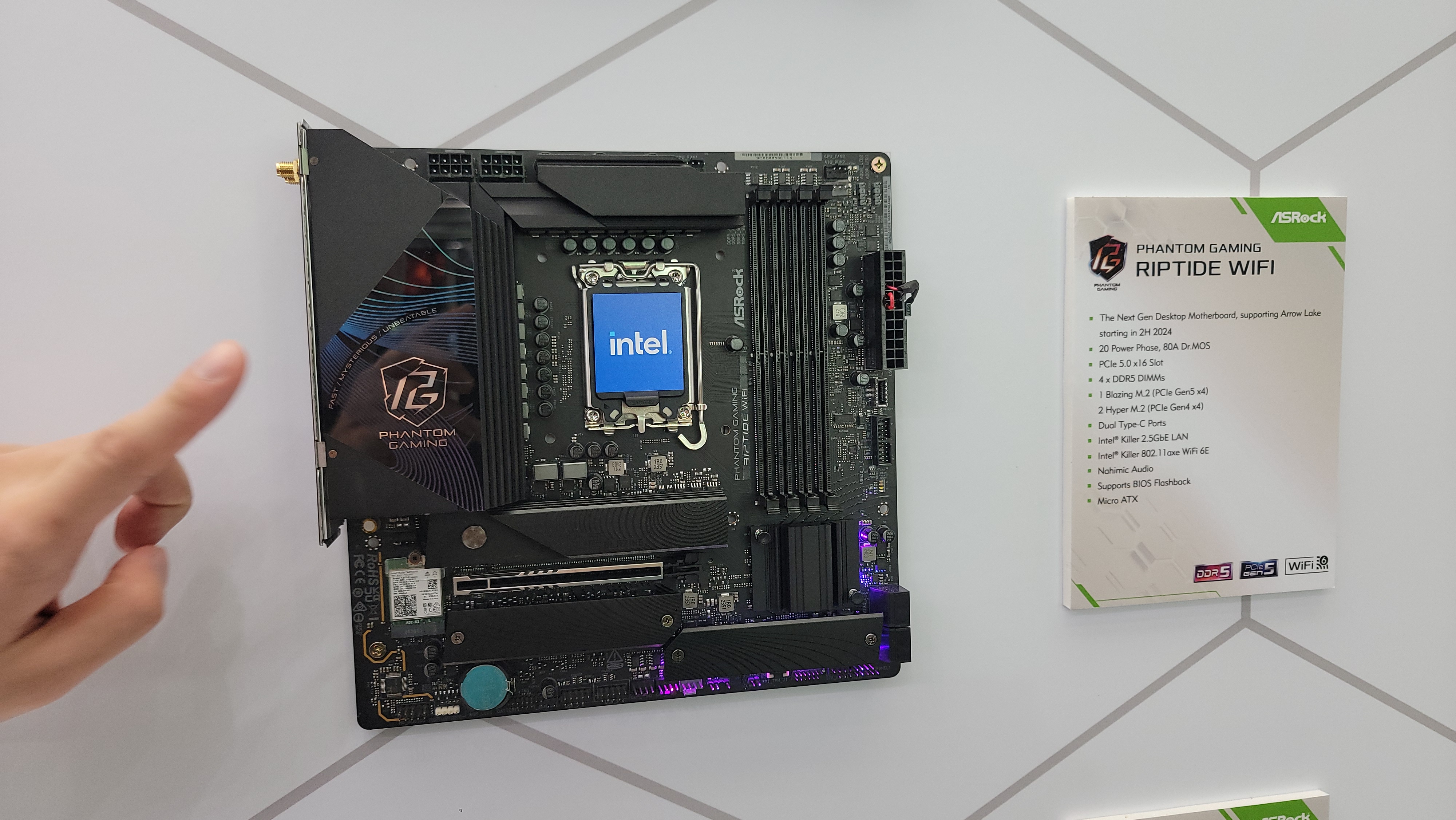
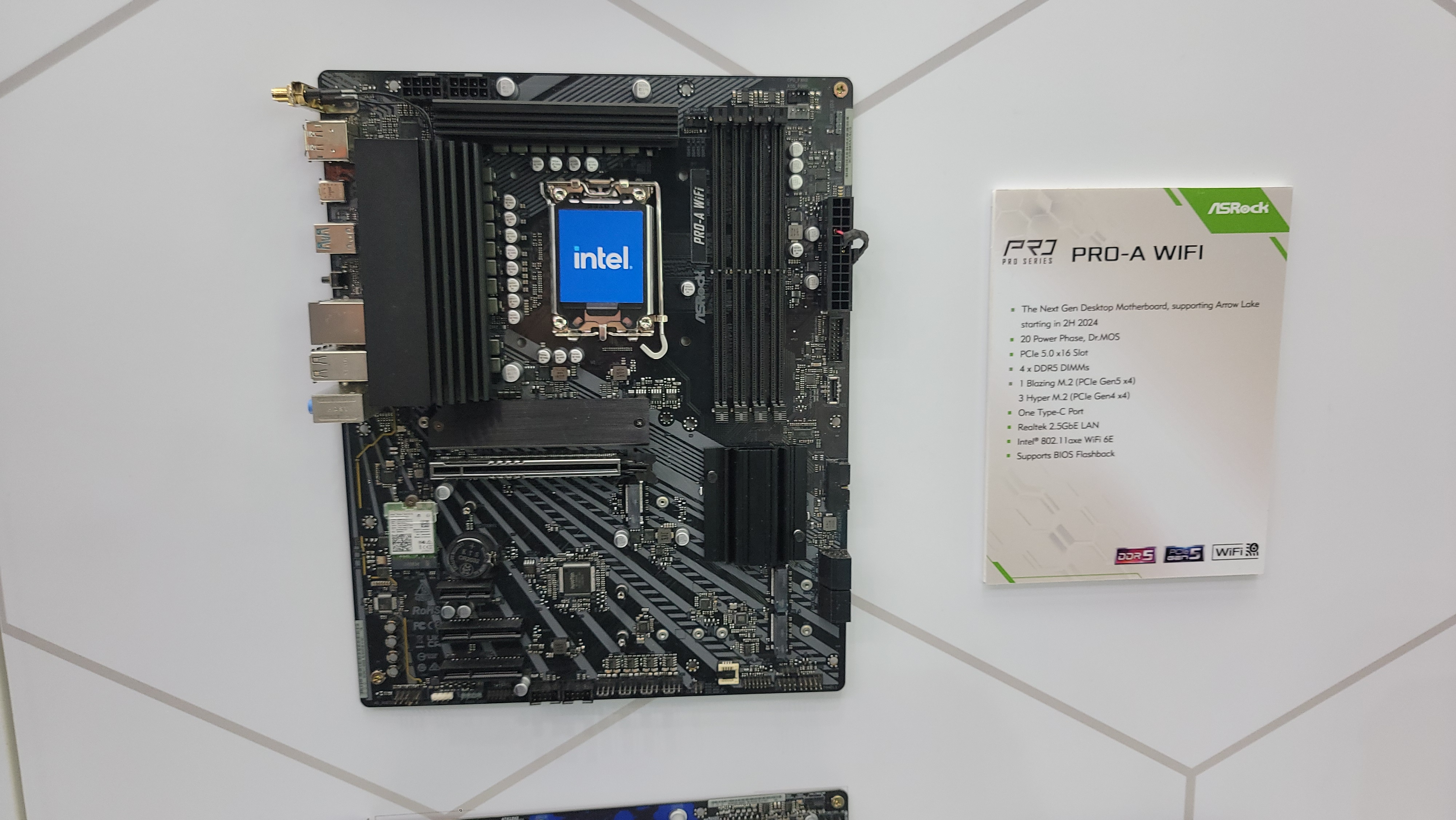
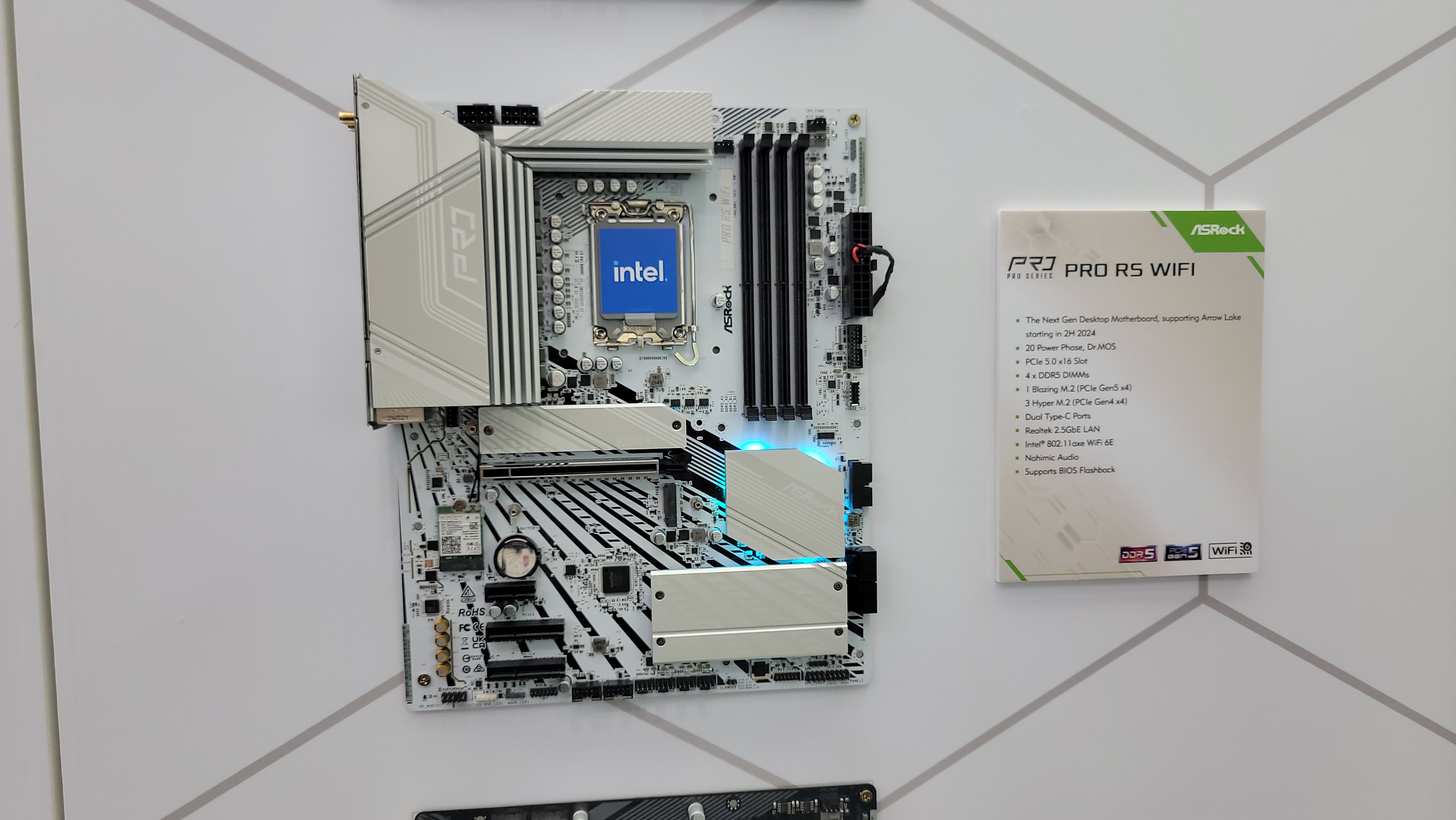
The Taichi Aqua takes on the role of its predecessor as the most potent and feature-rich Intel board ASRock makes. The only difference now is that it is being integrated into the Taichi series, whereas previously it was part of its own exclusive Aqua-branded sub-lineup.
The board features a 33-phase power delivery system, four DDR5 slots, six M.2 slots— two of which are Gen 5 supported — 10Gb and 5Gb Ethernet, and WiFi 7 support. Like its predecessor, the power delivery system can be cooled by air or liquid, featuring a pre-installed hybrid heatsink that can be connected to a custom loop. The board also retains its predecessor's white appearance, with a fully white PCB and white heatsinks and covers.
The Taichi variant is a step down from the Aqua variant, sporting a weaker but nonetheless potent 25-phase power delivery system. The board also gets downgraded to five M.2 slots, with the 2nd Gen 5 slot removed, and gets downgraded to 5Gb and 2.5Gb ethernet. All other specs remain virtually the same, as far as we can tell. The board comes in a black finish sporting the Taichi series' classic steampunk vibe of gears dotted around the board, along with RGB lighting.
As the name implies, the Taichi Lite is a cut-down version of the Taichi for more value-oriented customers. The main difference is the aesthetics, which have been taken down a notch. There is no RGB lighting on the board, and the color scheme is more stealthy, consisting of just black, white, and silver. This is a good option for users who want the performance of the Taichi but don't care for its bling.
The Taichi OCF (or OC Formula) is the newest entry to the Taichi lineup. This model is aimed specifically at overclockers, as the OC in OCF implies. The board features a 27-phase power delivery system (two more than the Taichi and Taichi Lite) and two DDR5 DIMMs. The lower DIMM count translates into higher memory overclocking headroom. ASRock added several yellow accents to the board to differentiate it, as well as an "OC Formula" brand name near the bottom of the board.
It remains to be seen how well this board can overclock Arrow Lake chips compared to the Taichi Aqua with its superior 33-phase system. But the OCF will hands-down be the best Taichi board of the lineup for memory overclocking, thanks to its dual DIMM configuration.
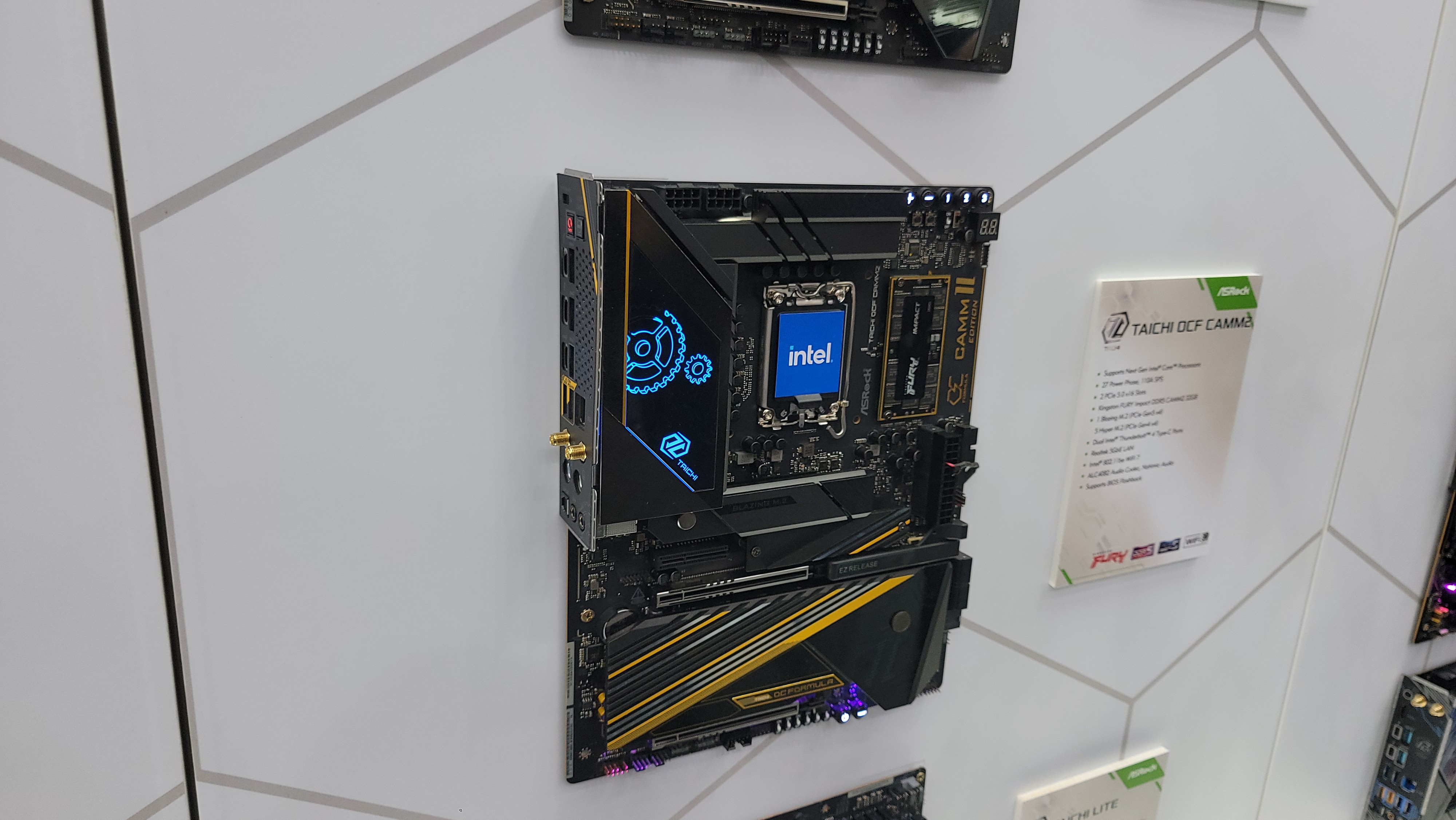
ASRock also showed off a very specialized variant of the Taichi OCF sporting a CAMM2 memory module. For more details check out our previous coverage of the new CAMM2 memory standard, but this new board replaces the two DDR5 DIMM slots with a single embedded Kingston Fury Impact DDR5 CAMM2 32GB module installed horizontally on the board. This configuration is not completely optimal for real-world usage since the module apparently cannot be upgraded. However, it is a good demonstration of CAMM2 working in a desktop form factor — something we have not seen before.
Non-Taichi Motherboards
ASRock also unveiled several other boards under its Pro series, Steel Legend series, Livemixer series, and Phantom Gaming series sub-lineups.
ASRock showed off ATX and Micro ATX versions of its Phantom Gaming Riptide boards featuring the series blue and black color scheme. The ATX counterpart comes with 22 power phases, four DIMM slots, five M.2 slots (one Gen 5 supported), dual USB-C ports, Intel 2.5Gb Ethernet, and Intel WiFi 7. The Micro ATX variant manages to keep everything the same except for a minor reduction in the power delivery system to 20 phases and the removal of one M.2 Gen 4 slot.
The Lighting WiFi is one of the most confusing boards in ASRock's lineup. The only difference between this board and the Riptide ATX is the lack of a 5th M.2 slot, and that's it. Aesthetically, it is also very similar but slightly different graphics to differentiate itself.
Another Phantom Gaming board ASRock showed off is the Nova WiFi. Unlike the Lightning, this one brings more tangible upgrades to the table. This variant is effectively the flagship motherboard in the Phantom Gaming sub-lineup, nipping at the heels of the Taichi Lite. The Nova offers a 25-phase power delivery system, six M.2 slots (one being Gen 5 enabled), dual USB-C ports, Realtek 5Gb and 2.5Gb Ethernet, along with an Intel WiFi 7 card. The color scheme is very similar to the Riptide series, save for the flashy mirror-like accents on the bottom M.2/chipset cover and rear I/O shroud.
The Steel Legend WiFi is a white variant of the Lightning WiFi. The board comes with the exact same specs as the Lighting, consisting of a 22-phase power delivery system, four M.2 slots, two USB-C ports, Realtek 2.5Gb Ethernet, and Intel WiFi 7 support. The board comes with a fully whited-out color scheme — perfect for white-themed builds.
The Livemixer WiFi is yet another spin-off of the Riptide ATX/Lightning variants, with its primary focus being aesthetics. Spec-wise wise, the board is identical to Steel Legend, save for a downgrade in wireless support to WiFi 6E. The board's aesthetics are about as crazy as it gets, featuring a graffiti-inspired purple, blue, and white color scheme with splashes of paint everywhere on the motherboard.
Finally ASRock showed off a couple of Pro series motherboards, which represent the company's entry-level offerings. The Pro-A WiFi comes with 20-phase power delivery, four M.2 slots, one USB-C port, Realtek 2.5Gb Ethernet, and Intel WiFi 6E support. The board comes in a basic black finish, lacking any fancy graphics. It also lacks a rear I/O shroud and M.2 heatsinks.
The Pro RS WiFi is a higher-tier counterpart featuring all the same specs as the Pro-A, but in a white finish with a white PCB. The board also comes with a plethora of shrouds, covers, and even some RGB lighting, rectifying the Pro-A's aesthetic weaknesses.







